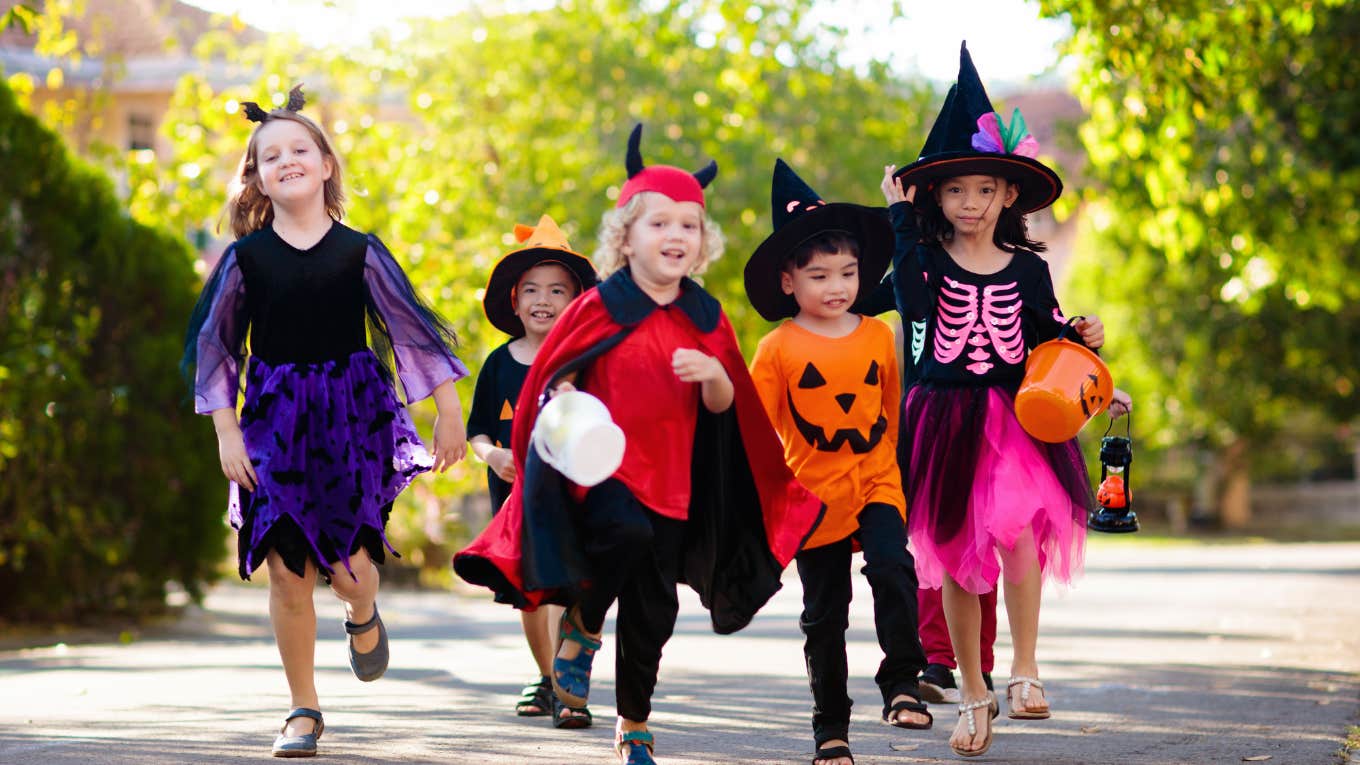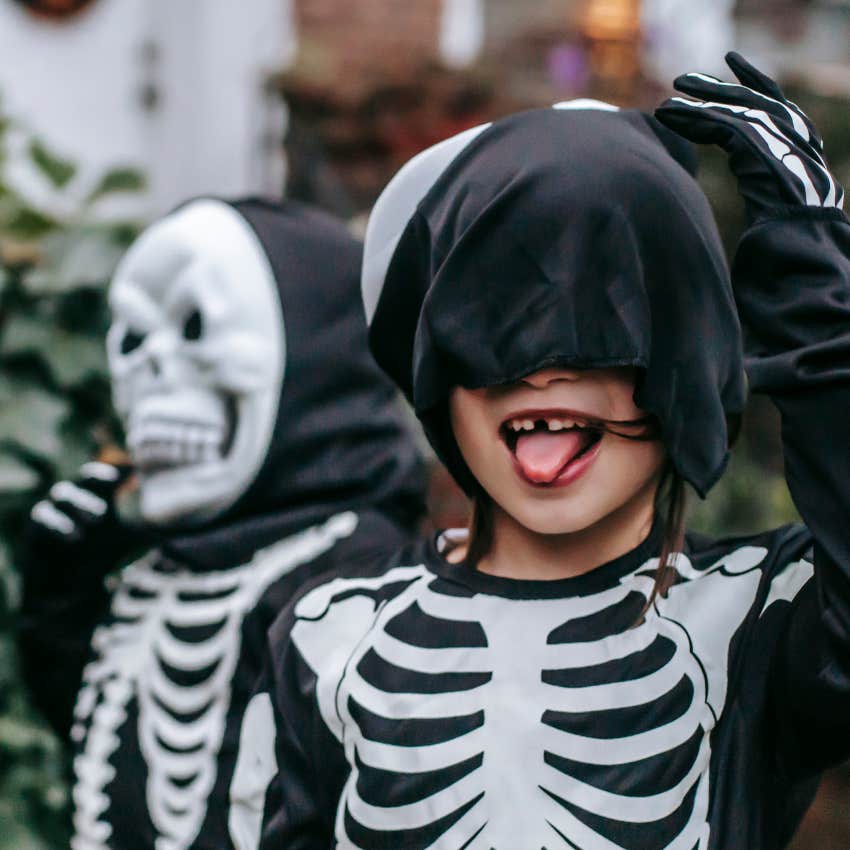Mom Who Lives In A ‘Rich’ Neighborhood Asks If She Was Wrong For Ruining Trick-Or-Treating For Thousands Of Kids
She may have ruined Halloween for countless out-of-town families.
 FamVeld from Getty Images / Canva Pro
FamVeld from Getty Images / Canva Pro For kids, trick-or-treating is the highlight of the fall season. Each year, with candy as currency, thousands of kids descend on doorsteps dolling out the sugary bounty.
While many adults look back fondly on their time as kids trick-or-treating, kids today take a more strategic approach in their search for candy, seeking out the neighborhoods with the best candy instead of sticking to their local block.
This strategy can be a bit of a nightmare for adults in targeted communities, however. One woman who lives in a rich neighborhood took to Reddit with this very complaint.
The woman explained that it's not fun when their neighborhood gets trashed because they live in a Halloween "hotspot."
While many adults in the neighborhood and in the media at large said this was not the trick-or-treating experience they remembered as kids, the reality is that this phenomenon of “traveling trick-or-treaters” is not new. Parenting forums from the early 2000s revealed that traveling to different neighborhoods for trick-or-treating was common.
However, this mom was not happy about it, especially after her daughter broke her arm on Halloween and they couldn’t leave her neighborhood for medical help due to the volume of trick-or-treaters. While she admitted that the number of trick-or-treaters in previous years was “annoying,” this Reddit mom never complained until her daughter broke her arm last Halloween.
“There were so many people in our neighborhood,” she wrote, “we couldn’t get out. There were cars everywhere — lining the streets, parked in people’s yards … it was horrible.”
 Photo: Charles Parker from Pexels / Canva Pro
Photo: Charles Parker from Pexels / Canva Pro
They waited until most people had cleared out of the neighborhood before seeking help for her daughter which meant she endured the pain of a broken arm until the early hours of the morning.
Worried about other families in their neighborhood potentially dealing with a similar emergency, she decided to take matters into her own hands.
She contacted authorities to ensure only kids who lived in the neighborhood could trick-or-treat there.
“I was done,” the mom wrote after dealing with her daughter’s emergency amidst thousands of trick-or-treaters from neighboring towns. “I contacted the neighborhood community and we managed to get some folks (cops, mostly) to stand at the gate with a list … only people that live here, family members, and friends are allowed in.”
Families in the neighborhood noticed tons of changes to their Halloween night scene. Outside of alleviating this mom’s concern about hazards, the streets were cleaner with less trash, it was quieter, and families were able to downsize their candy purchases.
“There were only about 300 kids in the neighborhood … it was great," she wrote. "We’re doing it again next year.”
So while other neighborhoods and families might be experiencing a natural decrease of trick-or-treaters in 2023, this neighborhood forcefully decreased their numbers by placing regulations on those allowed into their “prestigious” Halloween hotspot.
Her sister was appalled by her actions and told her she ruined Halloween trick-or-treating for thousands of kids.
Wondering why their neighborhood was so much quieter, this mom’s sister was furious when she heard what happened.
“She got really angry,” the mom wrote, “when we were kids we had to trick-or-treat in other neighborhoods because we lived in a trailer park with no other kids.”
With income inequality growing exponentially within the last decade, as a 2016 article from Mic noted trick-or-treating has become a luxury for children with affluent families or those living in areas that have easy access to the tradition thanks to simple things like streetlights, sidewalks and adequate police presence.
 Photo: max-kegfire from Getty Image / Canva Pro
Photo: max-kegfire from Getty Image / Canva Pro
Sadly, all of these things that make the tradition safe and fun for children are dependent in many instances on zip code and tax bracket. It becomes more feasible for parents to take their kids to “richer” (and safer) neighborhoods.
“She told me I was a horrible person for ruining thousands of kids’ Halloween, but honestly, I’m not too broken up about it — it was a hazard,” the Reddit mom argued. So, if affluent neighborhoods are worried about safety hazards and children in rural or low-income neighborhoods aren’t safe enough to trick-or-treat in their own neighborhoods, what’s the best solution?
Other social media posts revealed more inclusive trick-or-treating ideas.
With many families unable to give up a small fortune for Halloween candy and costumes, various trick-or-treating alternatives have become more popular to expand the tradition’s access in different communities. For example, trunk-or-treats are one alternative (and a more popular one in previous years) than traveling to other neighborhoods to trick-or-treat. This alternative allows families to travel to an outside location, usually outside of their neighborhoods in a common space and set up in the trunks of their cars.
Kids are able to come and get candy in a centralized, safe, and easily accessible location for the community.
So, for families that would have traveled to other neighborhoods to allow their kids to trick-or-treat, this trunk-or-treat alternative might be a better solution for everyone.
Zayda Slabbekoorn is a news and entertainment writer at YourTango focusing on pop culture analysis and human interest stories.

